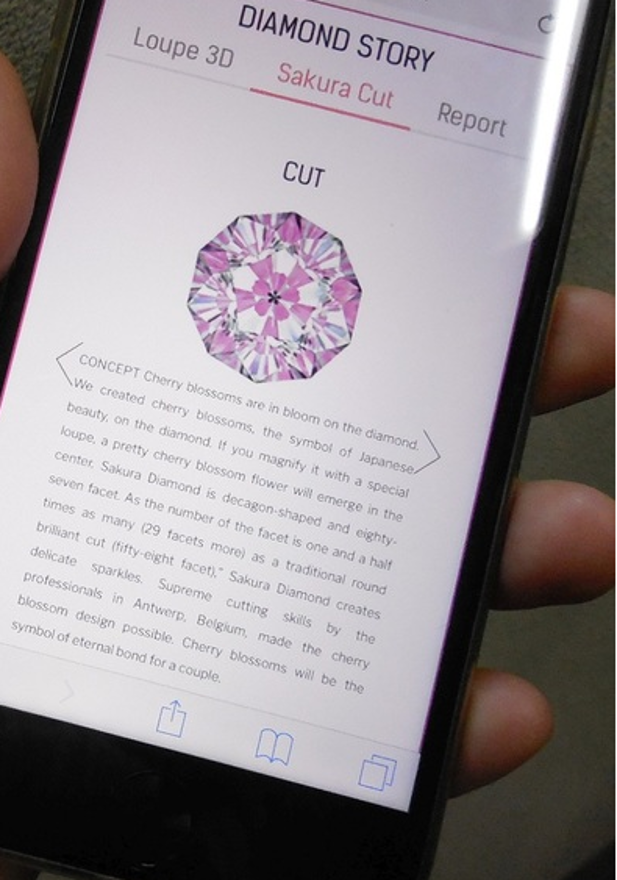An island nation with a population of over 120 million, Japan has been a modern leader in diamond consumption. In the early 2000s, in fact, Japan accounted for 20% of global diamond demand. This is a remarkable number, considering that the traditional diamond engagement ring was never a historical part of Japanese culture. The Western concept of the diamond as a symbol of marriage was only even introduced to the country in the late 1950s with a marketing campaign by DeBeers.
In the years since, economic fluctuations, changing social norms, and shifts in spending habits have all impacted the Japanese diamond market. What are some of the trends and challenges facing the jewelry and diamond industries in Japan as we embark on a new decade? Let’s take a look:
The aesthetic of luxury
According to the CEO of Harry Winston, whose brand just opened its ninth Japanese boutique in Tokyo, “Japan is one of the largest luxury markets in the world.” Japanese tastes in jewelry typically reflect a unique blend of traditional handcrafting and innovative design trends.
And when it comes to diamonds, the key is very high quality, outstanding levels of precision and visual beauty. At Sarine, we’ve seen a strong preference for VVS diamonds of average 0.3 points. The Japanese consumer will choose smaller diamonds that reflect true luxury and quality over larger, bling-y diamonds – every time.
Adopting diamond technology
Japanese consumers have always been tech savvy and tend to be early adopters of technology. This is true in the diamond industry as well. Consumer demand for increased trust, transparency and a more convenient, tech-based approach to the diamond buying process is reflected in the fast penetration of Sarine’s digital diamond traceability reports into the Japanese market.

But this is not the first time that diamond tech has been enthusiastically embraced in Japan. The leading Japanese bridal jewelry brand New Art (Exelco) was the first company to adopt Sarine’s advanced diamond technologies to enhance the retail experience for diamond consumers, with Light performance grading reports in 2013, and Diamond Journey™ rough-to-polished reports in 2019.
Economic measures to overcome slowed spending
In October 2019, the Japanese government increased the sales tax from 8% to 10%, the first tax hike in five years. In the month of September, before the increase, there was a rush on household spending, followed by a decline after the new tax rate went into effect. In anticipation of an expected spending slowdown, the government instituted various measures to help offset the damage. This included a 5% rebate on electronic purchases made at smaller retailers, which was also intended to promote a cashless society, by driving more digital-based transactions throughout the country.
With retail spending down around 10%, the government introduced a massive stimulus package in late 2019, worth around 26 trillion yen, or $240 billion, in an attempt to boost the lagging economy. In the face of these measures, the Central Bank of Japan is optimistic, raising its growth forecast for a positive outlook as we move into 2020. This bodes well for the diamond and jewelry retail markets in Japan.
Potential to boost consumption of luxury goods
The mid-1980s in Japan saw the rise of the “bubble economy”, a time of economic prosperity and increased spending. During that period, Japanese consumers often purchased high-quality, expensive diamonds and gems. Today, many of those diamonds, which have been stored away by families for the past 40 years, are being liquidated and the majority snapped up by foreign traders who travel to Japan in search of these luxury jewels. In fact, 40% of traders participating in Japanese diamond auctions are foreigners.
This “bubble heritage” phenomenon is part of a wider trend that sees a slowing momentum of luxury goods purchases, compared to the 1980s. Like many parts of the world, young couples in Japan today are spending less on luxury items and more on other sectors, particularly travel, an industry which is booming in Japan. In 2018, nearly 19 million Japanese traveled abroad.
This is exactly where the power of digital retail technology can be implemented in retail jewelry stores to harness the Japanese appreciation for aesthetic luxury and boost purchases of high quality brands and products.
Decline in marriage and birthrate
The marriage rate in Japan is in constant decline, with 2019 the sixth year in the row showing fewer marriages. In the mid-1990s, one in 20 women in Japan had never been married; today, the number is one in seven. This has spawned an entire retail industry catering to singles and single life, particularly for women.
Within the population who are marrying, however, there is a strong tendency to purchase jewelry for the occasion. Wedding rings are a standard traditional purchase, and every couple getting married in Japan buys wedding bands. However, just 60% of engaged couples in Japan purchase diamond engagement rings, which means there is a large potential for growth among this customer segment. Younger Japanese diamond buyers in particular are responding positively to tech-based in-store shopping experiences, such as Light performance grading and interactive digital reports.
In fact, the implementation of technology is a key consumer trend in the diamond retail industry in Japan, and a new generation of sellers is ready for it too.
2020 - A game-changing year for the Japanese jewelry industry
The new decade brings with it an important generational shift. Many jewelry retailers in Japan today are handing down their businesses to their children. This younger generation is educated, savvy and highly attuned to technology. They are the first generation to have been raised in a tech-based world. They are well equipped to understand how digital mobile technology can enhance the customer experience and strengthen the customer’s connection with a brand or a jewelry piece. After all, they are digitally native consumers themselves. And, they are the engine that will drive revolutionary change in the diamond jewelry industry in Japan in the decade to come.

.png)



-1.jpg?width=310&name=blog_image%20(003)-1.jpg)





